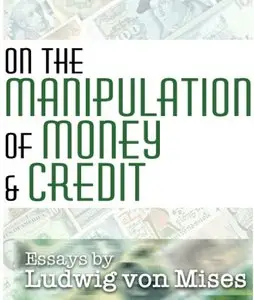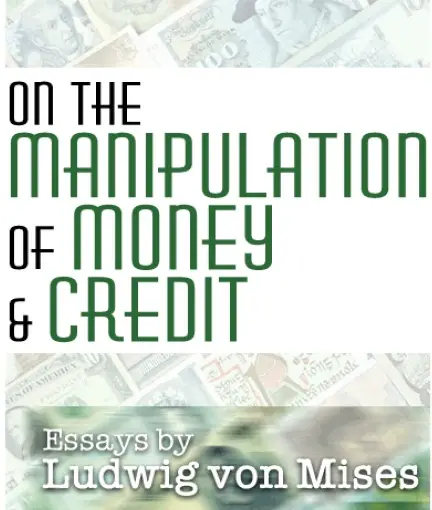"On the Manipulation of Money and Credit" by Ludwig von Mises
Free Market Books/Ludwig von Mises Institute | 1978/2002 | ISBN: 0930902017 | 233 pages | PDF | .6 Mb
Free Market Books/Ludwig von Mises Institute | 1978/2002 | ISBN: 0930902017 | 233 pages | PDF | .6 Mb
Attempts to stabilize the value of the monetary unit strongly influence the monetary policy of almost every nation today. They must not be confused with earlier endeavors to create a monetary unit whose exchange value would not be affected by changes from the money side.
In those olden, and happier times, the concern was with how to bring the quantity of money into balance with the demand, without changing the purchasing power of the monetary unit.
Thus, attempts were made to develop a monetary system under which no changes would emerge from the side of money to alter the ratios between the generally used medium of exchange (money) and other economic goods. The economic consequences of the widely deplored changes in the value of money were to be completely avoided.
Table of Contents
INTRODUCTION
Stabilization of the Monetary Unit, From the Viewpoint of Theory (1923)
I. The Outcome of Inflation
II. The Emancipation of Monetary Value from the Influence of Government
III. The Return to Gold
IV. The Money Relation
V. Comments on the "Balance of Payments" Doctrine
VI. The Inflationist Argument
VII. The New Monetary System
VIII. The Ideological Meaning of Reform
APPENDIX
BALANCE OF PAYMENTS AND FOREIGN EXCHANGE RATES
Monetary Stabilization and Cyclical Policy (1928)
PART I Stabilization of the Purchasing Power of the Monetary Unit
I. The Problem
II. The Gold Standard
III. The "Manipulation of the Gold Standard"
IV. Measuring Changes in the Purchasing Power of the Monetary Unit
V. Fisher's Stabilization Plan
VI. Goods-Induced and Cash-Induced Changes in the Purchasing Power of the Monetary Unit
VII.The Goal of Monetary Policy
PART II Cyclical Policy to Eliminate Economic Fluctuations
I. Stabilization of the Purchasing Power of the Monetary Unit
II. Circulation Credit Theory
III. The Reappearance of Cycles
IV. The Crisis Policy of the Currency School
V. Modern Cyclical Policy
VI. Control of the Money Market
VII. Business Forecasting for Cyclical Policy and the Businessman
VIII.The Aims and Method Cyclical Policy
The Causes of the Economic Crisis (1931)
I. The Nature and Role of the Market
II. Cyclical Changes in Business Conditions
III. The Present Crisis
IV. Is There a Way Out?
TWO POSTSCRIPTS
The Current Status of Business Cycle Research and Its Prospects for the Immediate Future (1933)
The Trade Cycle and Credit Expansion: The Economic Consequences of Cheap Money (1946)
with TOC BookMarkLinks
Web edition. Originally published Dobbs Ferry, Free Market Books, 1978
More : You find here



